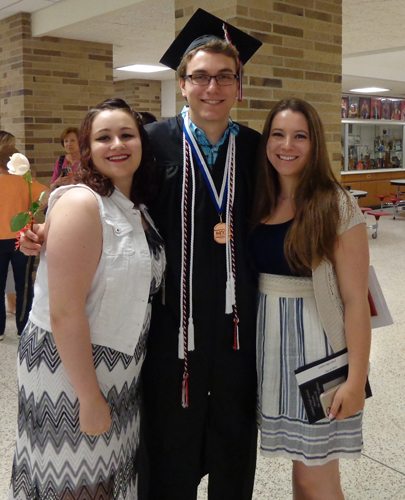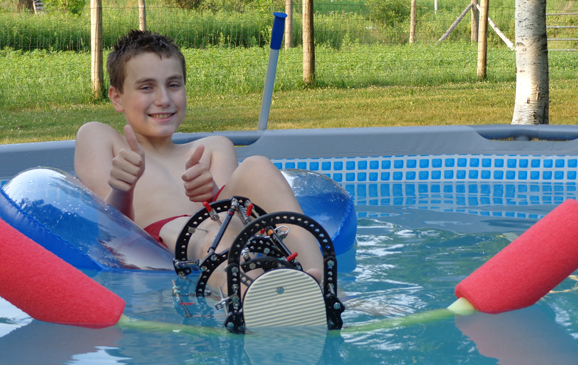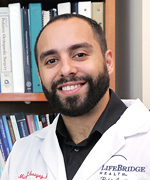Ollier Disease
What is Ollier disease?
Ollier disease is a non-hereditary, rare disorder where tumors made of cartilage form inside the bone. These tumors are noncancerous and are called enchondromas. They primarily grow near the growth plates of the long bones in the arms and legs. The enchondromas interfere with growth of these bones, causing angular deformities and shortening of the affected limb. The enchondromas become stable after puberty when bone replaces the cartilage.
Named after the French surgeon who first described the condition, Ollier disease affects 1 in 100,000 individuals. The underlying cause of Ollier disease is not completely understood. It is often not detected until improper bone growth is detected in early childhood. Usually only one limb is affected, but it can be bilateral—occurring in both limbs. It also more often affects legs than arms.
How is Ollier disease diagnosed?
The X-ray appearance of Ollier disease is quite unique, so it is usually not necessary to do biopsies or special X-ray tests like MRI or CAT scans.
What are the most common problems caused by Ollier disease?
Most patients with Ollier disease have deformities in the thigh bone (femur) and the shin bone (tibia). The Ollier cartilage can inhibit the normal growth of the limb, leaving the leg/arm short and crooked. The bone deformities above the ankle contribute to the ankle joint tilting, which can lead to ankle arthritis in the future if left untreated. Arm problems are less common than leg problems in Ollier disease. We also can see deviations in the fingers.
How are the resulting limb deformities and limb length discrepancies treated?
In children, we first predict the amount of limb length discrepancy that will be present when the child reaches the end of growth (skeletal maturity) using the Multiplier app developed at the International Center for Limb Lengthening at the Rubin Institute for Advanced Orthopedics in Baltimore. Then we identify all the deformities and joint instabilities present and develop a treatment strategy.
When treating limb deformities and limb length discrepancies, the goal is to have straight limbs that are equal in length. Shorter limbs can be lengthened by either external lengthening or by internal lengthening. In most cases, angular correction can occur at the same time as lengthening. In young children, external fixation frames are the only lengthening treatment option, because their bones have not yet reached the width and length necessary to accommodate the internal lengthening nails. In children, the growth of the longer limb may also be stopped by a procedure called epiphysiodesis. The enchondromas do not need to be removed.
We generally start lengthening the thigh bone and shin bone simultaneously when children are four to six years old. This developmental limb length discrepancy increases as the patient grows, and the final length difference tends to range from 10 to 30 cm (4-11.8 in). Therefore, patients usually require multiple surgical procedures starting with external fixation frames at early ages and finishing with internal lengthening closer to maturity. Treatment schedules are individualized.
Patients who have arm deformities and limb length discrepancies can be treated with lengthening of the humerus, the long bone of the upper arm. Adults with Ollier disease that was left untreated and have resulting bone deformities and limb length discrepancies have had excellent results with internal lengthening.
What happens after surgery?
During bone lengthening, patients participate in rigorous physical therapy to lengthen the soft tissue surrounding the bones. Generally, patients with Ollier disease have faster bone healing than other patients, so special care is given to make sure the bone does not start to consolidate before the desired lengthening results are achieved.
What are long-term concerns?
With this condition, it is important to monitor the bone growths throughout life as some patients will develop cancer in the bone during their twenties and later. Such tumors present as lumps increasing in size. They can usually be cured by surgical removal of the affected portion of the bone.
Why choose the International Center for Limb Lengthening for treatment of Ollier disease?
Limb lengthening and deformity correction are complex processes. Your doctor at the International Center for Limb Lengthening will take the time to make sure you understand all of your options and then will customize your treatment to meet your specific needs. Our patients benefit from our team-centered approach with world-renowned pediatric and adult orthopedic surgeons and specialized physician assistants, nurses and physical therapists. We help patients with Ollier disease achieve their best possible result.




